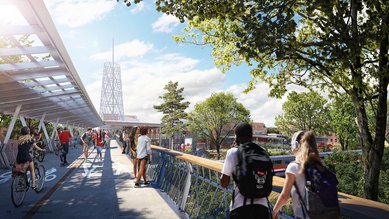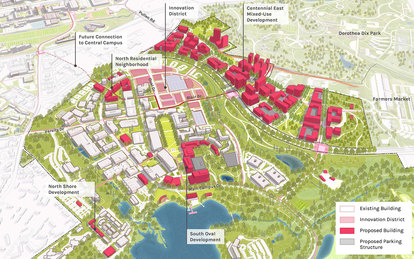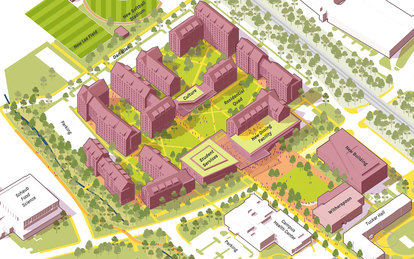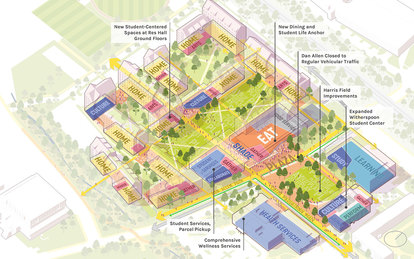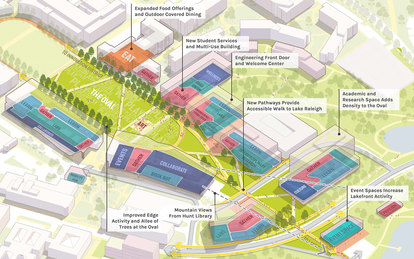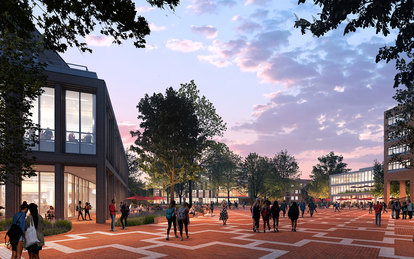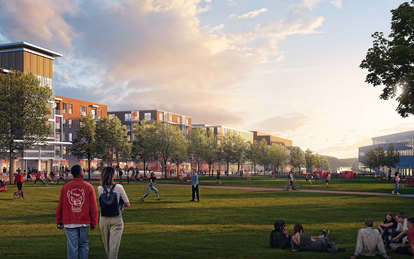North Carolina State University Physical Master Plan
The master plan establishes a polycentric model with hubs that improve connectivity across a dispersed campus and build on the strengths of this leading research university.
Client
North Carolina State University
Location
Raleigh, North Carolina
Markets/Services
Higher Education, Campus Master Plans, Campus Planning, Campus Strategy & Analytics
Size
4,828 AC
The largest university in the Carolinas with more than 36,000 students, North Carolina State University is notable as an R1 land grant research university and part of North Carolina’s Research Triangle. Since the university’s founding in 1887, its Raleigh campus has grown to encompass five distinct campus precincts and two field labs. As part of its 10-year master plan update, NC State leadership opted to collaborate with SmithGroup for a fresh perspective on its future planning. It identified its top priorities as improving connectivity across the 2,000-acre campus and prioritizing facility upgrades.
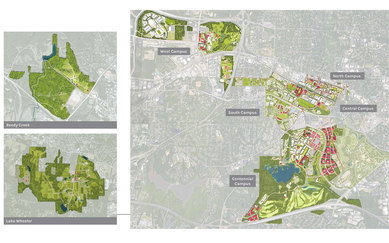
The plan establishes a polycentric planning model, with nine hubs of research, academics and student life to distribute programming and services in strategic locations across the vast campus. The design concepts lay the foundation for unprecedented connectivity and an enhanced student experience with new dining, housing and amenities. Because of the scale and complexity of the plan, the NC State/SmithGroup team devised a rubric of 3 Ps—principles, process and prototypes—to ensure inclusivity and accountability.
NC State Chancellor Randy Woodson discusses the university's physical master plan that will guide the growth and development for the next decade.
The polycentric model brings a holistic vision to the NC State campus. Rather than concentrating on the traditional main campus, the plan recognizes that the university has grown too large to organize around a single campus core. It identifies key areas throughout the different precincts and activates them as neighborhood hubs. Each hub encompasses research, academics and student life, but with a focus that best serves that neighborhood’s mission. The Cates Avenue West hub, for example, is weighted toward student life. Replacing an outdated dining hall and residence halls, it reinvents student living with contemporary lodging and dining, campus wellness, student gathering spaces and cultural activities.
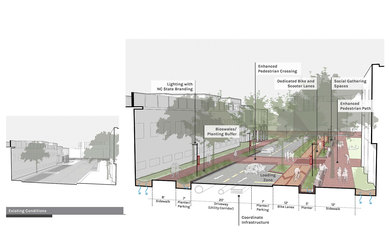
Improved connectivity among the campus precincts is a key component of the plan. Internal campus streets were analyzed for mobility and safety improvements, transforming parking and traffic lanes to more people-friendly streets with wider pedestrian areas, bike/scooter lanes and greenspaces wherever possible. As this prototype is applied across campus, it establishes a cohesive network of linear parks that creates a unified identity and significantly improves safe, efficient and clear navigation throughout the university.
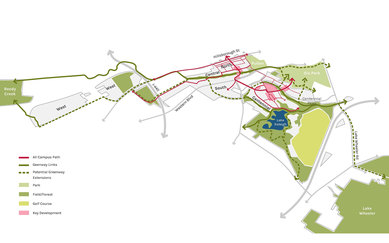
The plan evolved from a strong partnership and a highly inclusive process. It engaged students with pop ups across campus, surveys on the MapMyWolfpack app and intentional outreach to typically underrepresented groups. Task forces established the six principles that will guide each decision of the plan design and implementation: Reinforce Culture and Place; Align Facilities and Mission; Steward Campus Resources; Strengthen Campus Connections; Elevate the Campus Experience; and Ensure Infrastructure Reliability.
